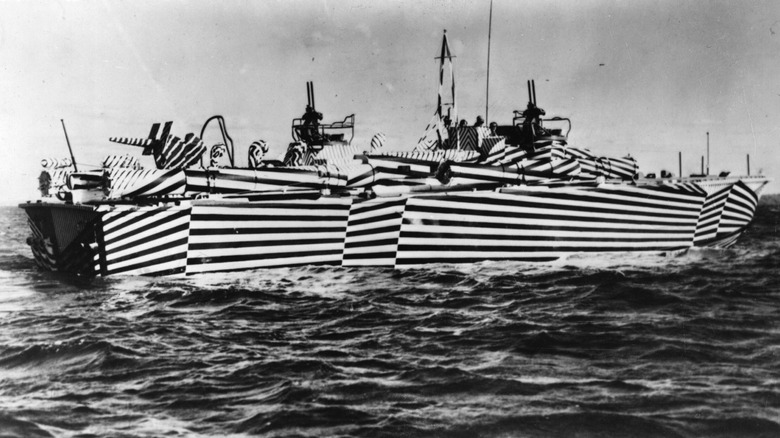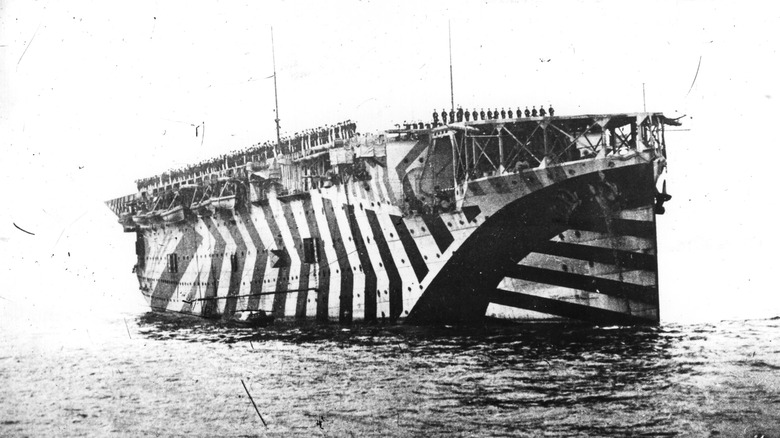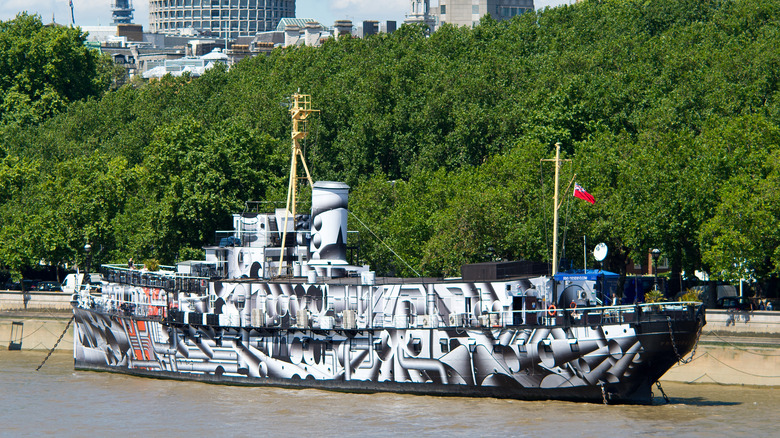What Is Dazzle Camouflage?
In the animal kingdom, there is a special kind of evasion mechanism where an animal relies on bright colors and patterns on its skin to camouflage its movement, using it as a visual trick to mask its true speed and movement pattern from an eager predator. Zoology experts call it "dazzle camouflage."
However, there is also a fascinating story about how mankind borrowed this idea from animals and put it to use in warfare. Historians lovingly called it "razzle dazzle." The idea was not to hide the ship in plain sight. Instead, it relied on painting complex patterns on the ship's exterior so that the enemy has a hard time figuring out its size and predicting its movement.
As outrageous as that sounds, it actually worked. It was used as recently as the first World War, wreaking havoc between 1914 and 1918. The concept made its way to the 21st century, albeit for the gas-guzzling vehicles all around us. Here's a brief idea of how dazzle camouflage has been used throughout history, and how it continues to be as effective in the modern age where cameras are all around us.
The war history of razzle-dazzle
Up until the first World War, the British Royal Navy was the undisputed champion of the seas, but that supremacy was against other ships. When the deadly German naval submarines — known as U-boats — entered the fray, all hell broke loose. The ships suddenly became easy targets against enemies that could launch destructive torpedoes. To evade them, a handful of ideas were thrown.
Some wanted to make the ship look like a whale. A few minds pitched the idea that they should be covered by reflective mirrors. The great inventor Thomas A. Edison reportedly wanted to turn ships into a moving island. He actually got to showcase his idea on the SS Ockenfels, but it did not prove to be as popular as his other discoveries. Enter Lucien-Victor Guirand de Scévola, a French painter who pioneered the idea of painting over artillery and outposts as a measure of camouflage defense.
But it was British artist Norman Wilkinson who took the idea to the sea and camouflaged thousands of battleships. Once painted, the ships were found to be effective in warfare, and Wilkinson was handed over a whole department called the Dazzle Section of the British Navy. He was also officially recognized as the creator of the dazzle technique. There is a fascinating Discovery UK short video on the art of dazzle painting ships and how it was widely adopted by the British military and allies. There are also some photographic samples here.
How did it work?
Historians have classified the invention of dazzle camouflage as a stroke of genius. On the surface, the idea of painting cool patterns over ships and making them stand out sounds absurd, as that would make them an easy target. But in reality, the geometric patterns made out of contrasting colors, curves, and shapes not only helped mask the true size of vehicles, but also confused enemy observes about its true shape and where it was heading when observed through a periscope.
A certain pattern of wavy curves would make the ship look smaller and also shifted the perceived movement into a different direction. All these tricks made it extremely difficult for an enemy to target such camouflage ships with torpedoes. Just the way a modern day sniper studies everything from wind speed to enemy movement before taking the shot, U-boat torpedoes also had to be launched after assessing the size and pace of a ship.
It was less about merely pulling the trigger and more about predicting where the enemy ship would be a minute after launching the torpedo. By camouflaging the ships, it became difficult to pinpoint the relative position of a ship a few minutes into the future. Miscalculating the target's movement by even a few degrees was enough to miss the mark, and this allowed the ships to evade the torpedoes. Dazzle camouflage can still be found on ships like the USS Freedom, but its use has drastically reduced in the modern era.
The modern avatar of dazzle camouflage
In the 21st century, dazzle camouflage has moved on from marine warfare to a less destructive domain — automobiles. Like celebrities often hide in plain sight behind weird hats and thick shades, automakers wrap test-model cars in skins that have intricate patterns to hide the true contours and lines. Headlamps and grilles are usually covered with items like vinyl, rubber, and tape.
The swirl and zigzag patterns act as visual noise to disguise the true design. Swirls, haphazard calligraphy patterns, skewed checkerboards, and harlequin design, among others, are widely employed by the likes of BMW, Range Rover, and Ford to hide their upcoming cars from eager eyes and lenses. "We like to save the big splash for when things come out looking beautiful and pretty," Chevrolet engineer Andrew Farah was quoted as saying by Autoblog.
Brands actually go to great lengths in order to ensure that their upcoming projects remain a secret. From renting racetracks under a fake name to hiring security teams that scour the entire area for hidden cameras, a lot goes into the process. According to a Forbes report, automobile spy photographers can make anywhere between $300 to $10,000 for such spy shots. While the camouflage paints don't hide everything, they at least throw off the cameras (and the naked eye) from making out the finer details and cuts of a car.



